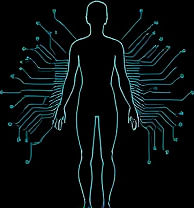Wearable Blood Oxygen Sensors: A Key to Personal Health Monitoring
 by Marlene Keeling
by Marlene Keeling
Wearable blood oxygen sensors offer a way to track vital health metrics in real time, aiding in personal enhancement and wellness. These devices help users monitor oxygen levels, supporting better fitness routines and early detection of health issues, all while integrating with daily life for tech enthusiasts.

Wearable blood oxygen sensors have become essential tools for those focused on health optimization. These devices measure the oxygen saturation in your blood, providing insights that can guide daily routines.
In the field of wearable technology, blood oxygen sensors stand out for their ability to deliver accurate data on SpO2 levels. SpO2, or peripheral capillary oxygen saturation, indicates how well oxygen is being carried to the body's extremities. This measurement proves crucial for individuals engaged in physical activities or those managing respiratory conditions.
One primary advantage of these sensors lies in their role in personal enhancement. By wearing a device that continuously monitors blood oxygen, users can adjust their activities based on real-time feedback. For instance, during exercise, if levels drop, it might signal the need for rest or better breathing techniques.
Health optimization through these tools extends to everyday life as well. Many people use them to track sleep quality, as oxygen levels can fluctuate during the night. Low readings might point to issues like sleep apnea, prompting users to seek improvements in their sleep environment.
When considering nootropics and cognitive enhancement, maintaining optimal oxygen levels is vital. blood oxygen sensors help ensure that the brain receives adequate oxygen, which supports mental clarity and focus. This integration allows biohackers to combine sensor data with cognitive routines for better results.
These sensors often come integrated into devices like smartwatches or rings, making them convenient for on-the-go use. For athletes, this means monitoring performance metrics during runs or workouts, potentially preventing overexertion.
The technology behind these sensors typically involves optical methods. Light is emitted into the skin, and the device measures how much is absorbed or reflected, calculating oxygen levels from that data. This non-invasive approach makes it user-friendly and accessible.
For wellness enthusiasts, the motivational aspect cannot be overlooked. Seeing improvements in oxygen saturation after adopting new habits can encourage continued self-improvement. Whether it's through better hydration, diet, or exercise, these devices provide tangible evidence of progress.
Choosing the right wearable involves looking at factors like accuracy and battery life. Devices with advanced algorithms offer more reliable readings, which is important for consistent tracking.
In practice, users might pair these sensors with apps that analyze data over time. This creates a comprehensive view of health trends, helping to identify patterns and make informed decisions.
Beyond fitness, health monitoring with these sensors can play a part in broader personal enhancement strategies. For example, they assist in managing stress by alerting users to drops in oxygen that might occur during anxious moments.
Future developments in this area promise even more innovation. As technology advances, we may see sensors that integrate with other health metrics, like heart rate or glucose levels, for a holistic approach.
To get started, individuals should select devices that fit their lifestyle. Comfort and ease of use are key, ensuring that monitoring becomes a seamless part of the day.
Overall, incorporating wearable blood oxygen sensors into your routine can lead to meaningful gains in wellness. By focusing on these tools, tech-savvy individuals can take proactive steps toward better health and enhanced performance.
Benefits in Detail
- Real-time tracking of oxygen levels
- Support for physical activities
- Insights into sleep patterns
- Aid in cognitive maintenance
- Encouragement for lifestyle changes
Tips for Effective Use
- Wear the device consistently for accurate data.
- Review readings regularly to spot trends.
- Combine with other health practices for optimal results.
- Consult professionals if unusual patterns appear.
- Keep the device updated for the latest features.
